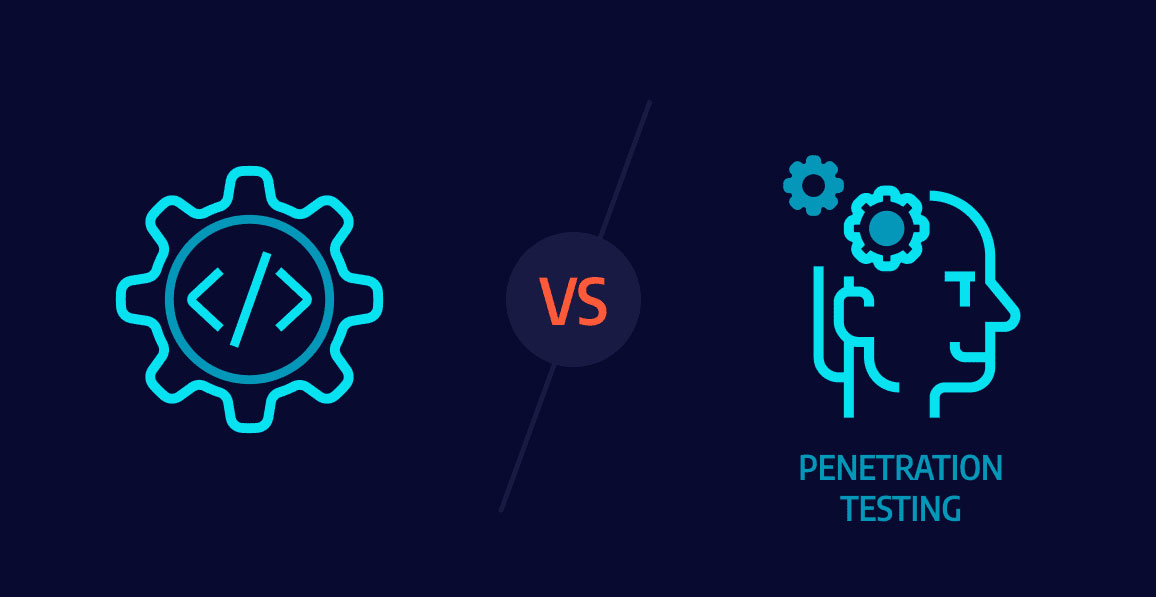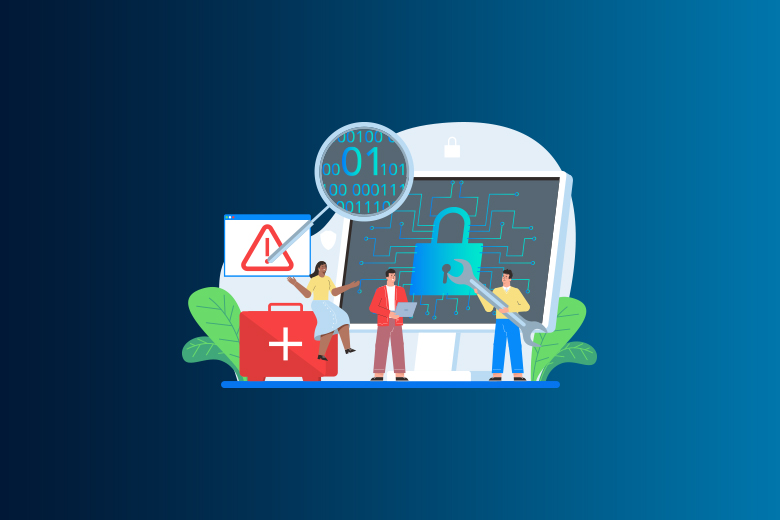20 December 2023
SafeAeon Inc.In today's digital jungle, where cyber threats lurk around every corner, safeguarding your valuable data is paramount. Imagine a world where millions of dollars are lost every year due to cyberattacks – a staggering $4 trillion annually according to Cybersecurity Ventures. That's why choosing the right security assessment is crucial for protecting your systems and keeping your data safe.
But with two powerful tools at your disposal – DAST and penetration testing – choosing the right one can feel like navigating a complex maze. Fear not, fellow security warrior! This guide will equip you with the knowledge to navigate these uncharted territories and emerge victorious.
Here you can check the clear difference between DAST and Penetration Testing:

1. DAST vs Penetration Testing - Definition
DAST Definition
DAST, or Dynamic Application Security Testing, checks your app while it's running, like a security guard. It's like a smart system that tries to break into your app like a real hacker would. Cross-site scripting, SQL injections, and other security holes that could allow major breaches are what its main job is to find.
The thing that sets DAST apart is its ability to fake strikes.
How It Works:
It works like a black box test, actively looking into your running app to find security problems as they happen. This method is very helpful for developers because it lets them see exactly where their app might be weak and lets them fix these problems right away. It's called "Dynamic" because it does all of this while your app is running.
An alternative is SAST, which is a bit different from what we're talking about here. SAST checks the code of an app, but only when it's not running. This means it can't find issues that happen when the app is being used. That's where DAST shines—it can find security holes in an app while a real person is using it, which SAST might miss.
The fact that DAST is not limited to a single computer language is one of its best features. It works with any device or technology because it doesn't need to see the source code. It's like a one-size-fits-all tool for finding holes in your system. It also does a great job of finding real problems without setting off unnecessary alarms. This lets developers focus on solving the real problems.
Simply put, DAST is an important part of any strong cybersecurity plan because it is a powerful tool for keeping your applications safe, especially when they are live and used.
Penetration Testing Definition
Like a drill, penetration testing is when experts pretend to be hackers to check how safe an application is. What was their goal? Like a real enemy would, to see if they can find and take advantage of weak spots. Some of the things that might be done as part of this kind of testing are trying to break into servers, messing with protocols, or testing other parts of the app to see if there are any weak places, especially in the code.
How it works:
The team gets together all the juicy information about any security holes they found after the test. These details are very helpful for app writers because they help them figure out where they need to improve security. Five major steps make up penetration testing: planning, scanning, getting access, keeping access, and analyzing. There are also various methods to carry out the test, such as internal, exterior, blind, double-blind, and targeted testing.
The first step is to make a plan. This is where the experts plan what to try and how to do it. They get useful information to figure out how the system they are after works and where it might be weak. After that comes the scanning step, where they really see how the app acts when it's being hacked. These people look at the app's code when it's not working and then see how well it works when it is.
They'll try to break in after they've checked out the place. Hacking tools like SQL attacks and cross-site scripting are used by the testers to find any weak spots in the app. They'll poke around, mess with data, and do pretty much anything else a bad guy would do to see how much damage they can do as soon as they get in.
The next part is all about waiting around to see how their "attack" works and how much trouble they can make. Finally, they write up a report with everything they found. This study has a lot of information. It lists all the security holes they discovered, what hackers could do with them, and how long they had to stay hidden before they were found.
Then, the people who are in charge of security get this report and use it to fix any problems. This makes sure that the app is as safe as it can be. To keep an app safe from real attackers, penetration testing is necessary. This is because it finds the weak spots in the app before the bad guys do.
2. DAST vs Penetration Testing - Benefits
DAST Benefits
Dynamic Application Security Testing, or DAST, is one of the most important tools for defense. Here are seven important reasons why using DAST to protect your apps is a good idea:
1. Real-Time Vulnerability Detection On-the-Fly Security Analysis:
DAST tools look at running apps and give real-time analysis. This method that changes based on the application helps find security holes that might only be seen when the app is running.
2. Freedom of language and framework:
Flexible Application: DAST doesn't care which programming languages or frameworks are used in your app. It sees the application as a black box, which makes it a flexible choice no matter what technology is behind it.
3. Find problems with runtime and configuration:
Full Analysis of the Runtime Environment: DAST can find problems with the runtime environment and setup settings that static testing might miss. This includes issues that only show up when the service is running.
4. Acts out attacks from outside:
Real-World Attack Scenarios: DAST helps find weaknesses that could be used by outside threats by modeling attacks from an outside point of view. It's like seeing how well your app can handle hacking efforts in the real world.
5. Easy Integration in the SDLC and Flexible Deployment:
DAST tools can be added at different stages of the Software Development Life Cycle (SDLC), which makes it easy to try and evaluate them all the time without stopping the development process.
Penetration Testing Benefits
Penetration Testing, which people sometimes call "pen testing," is an important part of defense. It includes pretending to be hackers in order to find and fix security holes. Here are seven important reasons why security testing is a good idea:
1. Find holes in security systems:
Comprehensive Risk Assessment: Penetration testing gives you a full picture of how safe your system is by showing you all of its weak spots, such as software bugs, incorrect system configurations, and even operating flaws.
2. Looks like real-life attack scenarios:
Realistic Threat Simulation: Pen tests act out real-life attack situations to see how an actual attacker might take advantage of security holes. This helps make the protection against possible hacking attempts stronger.
3. Helps set priorities for fixes:
Informed Risk Management: Penetration testing shows companies the most important security holes, so they can fix them faster and better use their resources to fix the most important problems first.
4. Keeps data from being stolen:
As a proactive security measure, regular pen testing finds and fixes vulnerabilities before attackers can use them, protecting private data and preventing costly data breaches.
5. Helps people follow the rules:
Meets Compliance Needs: Regular security testing is needed in many fields to make sure they are following rules like GDPR, HIPAA, or PCI-DSS. This keeps you out of trouble with the law and also earns the trust of your customers.
Conclusion
When it comes to cybersecurity, picking between DAST (Dynamic Application Security Testing) and breach testing can be like picking between a police officer and a SWAT team. Each has its own strengths: DAST is like a smart detective; it's always looking for holes in the programs you have going. It's a dynamic and flexible choice because it can find common threats in real time. A penetration test, on the other hand, is like calling the SWAT team for a full security drill. It goes deeper by modeling real cyberattacks to find possible weak spots. Remember that using both methods at the same time might be the best way to keep your home safe. It also varies based on the organization and industry niche in certain cases. Getting along with reputed organizations like SafeAeon you can seek the best assessment for your organization.














